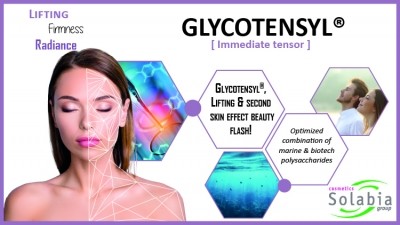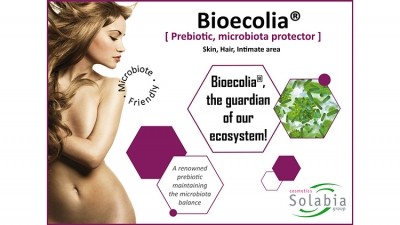Promotional Features
Lever’aging: Insight innovative solutions for a WellCare global strategy
In our society driven by self-exposure, social media, and the thirst for social distinction, appearance is of primary concern to each of us. It is reflected through the largest organ in our body: the skin. As the first interface with the outside world, it has in addition to its functional role, a social role which will determine our interactions with others.
Ineluctably, skin doesn’t escape aging and it’s at its level that it will take on the most visible aspect. Moreover, today's society is living longer, and this considerable increase of life expectancy upsets the age pyramid. As reflected by the neologisms pro-aging, slow-aging, or well-aging, the current trend is towards self-acceptance, its age and the respect for one's body, the famous body-positivism. However, if women, but also men, are gradually freeing themselves from the obsession with wrinkles and prioritizing their well-being and that of their skin, we all seek to keep healthy, glowing skin and to delay the signs of aging.
Thus, at the frontier of tissue developmental and aging biology, deciphering the cellular and molecular processes of skin evolution through aging is thus an active scientific domain. Indeed, anti-aging remains one of the most promising claims of the cosmetics market. We will focus on dermis characteristics at different stages of life, as well as alterations that occur during chrono-aging.
Dermis organization from birth to adulthood
The dermis forms the middle layer of the skin. It is defined as a dense fibrous connective tissue, much thicker than the epidermis, vascularized, and innervated. Following the pivotal event of birth, the skin will continue to evolve both in terms of tissue organization and at a molecular level. During the early stages of embryogenesis, the dermis is mainly made up of cells. Then, the matrix becomes the most abundant component, and the dermis develops in two anatomical zones, on the surface the papillary dermis and more deeply the reticular dermis. In addition to the role of intrinsic physiological mechanisms, this evolution can be impacted by exposure to exogenous stress factors, such as UV irradiation, pollution, and tobacco.
Fibroblasts are the main players in skin morphogenesis, they are involved in the synthesis of extracellular matrix (ECM) components but also in their arrangement by producing the enzymes necessary for their assembly or their degradation. In adult skin, the ECM includes:
1. the collagen network as a major constituent representing 70–80% of the dry weight of the skin. Within this structure, different glycoproteins allow the assembly of collagens into thick fibers giving the dermis strength and thickness (Kadler and al., 2008),
2. elastic fibers made up of elastin which are stretchable,
3. an amorphous substance composed of glycoproteins (fibronectin), proteoglycans (versican, decorin), and glycosaminoglycans (hyaluronic acid, chondroitin sulfate), with high hydrophilic power and facilitating the passage of nutrients and other small chemical molecules through the dermis to the epidermis.
Water is also a functionally important component, because its interactions with glycosaminoglycans generate significant osmotic swelling, which promotes water retention and dermal suppleness.
Focus on aging
During aging, fibroblasts also gradually plunge into a state of senescence causing both a decrease and deregulation of fibrillar synthesis (Naylor, Watson and Sheratt 2011). This greatly impacts the dermis composition and thickness: collagens and elastic fibers appear thinner and sparse, the amorphous substance is reduced and the ECM degradation takes place by an increase of the MMPs activity (matrix metalloproteases). This is usually coupled with a state of chronic inflammation and the release of cytokines (Wong et al. 2007). Over time, fibroblasts also lose their contractile capacity reducing tissue repair.
In addition, endocrine functions change with age and are closely linked to skin aging. Menopause leads to estrogen deficiency resulting in thinner, drier skin with lower collagen content and reduced elasticity.
Physiological consequences
Even if many inter-individual factors come into play during skin aging, it is possible to classify the visible changes according to age:
- 30 years old: appearance of expression lines,
- 40 years: wrinkles are marked on the forehead and the glabellar region. The skin becomes rougher and dehydrated. The onset of ptosis is observed: the lower part of the face gradually sags and the volumes change.
- 50 years old: crow's feet wrinkles appear more pronounced; the eyes become "wrinkled". The ptosis intensifies, the skin thins and loses elasticity and firmness.
A holistic approach of aging
From a macroscopic perspective, the lever’aging for our body are numerous: a healthy lifestyle, a strong family and friendly circle, a quality sleep, a balanced diet, as well as a regular sporting activity for example. All these factors are related to our lifestyles influence, our skin appearance, and the way it ages. They act as levers against aging by acting on physiological and biological processes and promote better skin aging.
Cosmetics are now part of a truly holistic approach where the skin health and beauty are inseparable. This led to the concept of WellCare, which highlights the cutaneous values in terms of structure and biological functions necessary for the skin protection and well-being.
The visible upheavals that take place in our skin with age affect our self-perception and our well-being. Thus, to best adapt to this evolution, in a perpetual quest to well-being and by extension, to well-aging, it is important to find suitable solutions.
Focus on solutions to lever’aging
To offer innovative biological solutions dedicated to all ages, the Solabia Group's research is interested in skin changes during aging by looking at cell biology processes at each stage of life. Inevitably, this quest for holistic WellCare solutions also involves understanding the mechanisms that influence our emotional sphere and by extension our well-being.
1) Act before it's too late
With the hectic pace of our lifestyles, the difference between our biological age - which corresponds to our real age - and our physiological age - the age of our skin - is becoming ever greater for individuals aged 35-45. These consequences are due to a desynchronization of our skin's clocks caused by chronological aging, specific to each individual, but also to the exposome. Thanks to its action on the senescence of cells, Essenc’Age boosts longevity by acting on the prevention of programmed aging linked to intrinsic mechanisms. In addition, it anticipates physiological aging due to the exposome by strengthening the skin architecture in the dermis. Indeed, it increases the expression of chondroitin sulfate and hyaluronic acid for deeply plumped skin. It also decreases the expression of MMP-1, thus participating in the fight against programmed and physiological aging. The physiological and biological clocks are resynchronized for a rejuvenated skin full of vitality!
2) Attenuate the signs of aging
As a direct consequence of the disorganization of the skin-deep architecture, facial sagging is one of the visible signs of aging that appear from the age of 40. Combining sensorially and effectiveness, 3Dermilyn stimulates key dermal proteins, decorin and fibrillin-1, respectively involved in the collagen network and elastic fibers formation. Moreover, 3Dermilyn replumps the skin upper layers by increasing the synthesis of epidermal hyaluronic acid. Wrinkles are blurred and the facial contours are redefined. In addition to visibly improving the skin appearance, 3Dermilyn reduces skin inflammation and significantly boosts the release of serotonin and dopamine, also called "Happiness molecules". The signs of aging are reduced, the skin regains well-being and serenity!
3) Enhance authentic aging
After 50 years, compulsory passage for all women, menopause modifies skin physiology and emotional state, including a deterioration in self-esteem. Dedicated to very dry and hypersensitive skin such as postmenopausal skin, FucoLife GR promotes skin regeneration by acting at the heart of the ECM. Thus, it significantly increases the dermal thickness and density from the first years of menopause, to prevent serious long-term deleterious effects. Repaired, the skin is more comfortable, and the signs of aging are visibly reduced. In addition, FucoLife GR reduces feelings of discomfort, improving self-esteem and mood. Women feel better about themselves!
Outlook and Conclusion
The development of scientific knowledge on the physiological modifications of skin aging has led to an evolution in the approach of the cosmetics industry. Now, the search for an anti-aging product is part of a comprehensive view including well-being and self-perception.
Taking this wide diversity of possible biological mechanisms into consideration, there is still a long way to go before discovering all the keys of tissue aging. Many promising pathways will undoubtedly modify our skin approach and the ingredients we use to highlight protection and well-being. More than ever, the Solabia Group is part of this vision by exploring the biological and physiological targets of better aging through the years and supporting this advancement in age so that it is synonymous with well-being and better quality of life. Thus, it offers adapted solutions through a global WellCare strategy: Essenc'Age, 3Dermilyn, and FucoLife GR.
Biblio
Kadler, E. K., Hill A., Canty-Laird, E. G. Collagen fibrillogenesis: fibronectin, integrins, and minor collagens as organizers and nucleators. Curr Opin Cell Biol 2008. Oct;20(5):495-501.
Naylor, E.C., Watson, R.E., Sherratt, M.J., Molecular aspects of skin ageing. Maturitas 2011. 69 (July (3)), 249–256.
Wong, T., McGrath, J. A., & Navsaria, H. The role of fibroblasts in tissue engineering and regeneration. British Journal of Dermatology, (2007): 156(6), 1149-1155.





